Anatomy of a Nifonging
“Local prosecutors in many of the 2,341 jurisdictions across the nation have stretched, bent or broken rules to win convictions, the Center has found. Since 1970, individual judges and appellate court panels cited prosecutorial misconduct as a factor when dismissing charges, reversing convictions or reducing sentences in over 2,000 cases. In another 500 cases, appellate judges offered opinions—either dissents or concurrences—in which they found the misconduct warranted a reversal. In thousands more, judges labeled prosecutorial behavior inappropriate, but upheld convictions using a doctrine called harmless error."
"Misconduct by prosecutors led to the conviction of innocent individuals, who were later exonerated. Guilty defendants have also had their convictions overturned, and are placed back on the street. In addition, the Center found many prosecutors, who were cited multiple times for misconduct. These prosecutors give recidivism—a word usually used to describe those they work to put behind bars—a disturbing new meaning.”
- “A prosecutor who benefited from the high-profile conviction…when the voters of St. Louis County elected him to a state court judgeship.”
- “A case that…shows what can go wrong as prosecutors collaborate year in, year out with the same group of police officers, forensic scientists, expert witnesses and judges. They come to trust each other, developing bonds that sometimes lead to shortcuts. If the evidence is weak, it becomes easier to ignore those weaknesses or paper them over. At each step, errors are ratified rather than exposed.”
Anatomy of a Nifonging
Lesson One: Premature conclusions can ensnare the innocent.
In the Center’s example, police assumed the suspect was guilty within a few days, and disregarded evidence that pointed away from the accused. The prosecutor followed those assumptions.
In the Duke Hoax, while it remains uncertain whether police actually believed in the case, DA Nifong prematurely concluded that a rape had occurred as early as March 27, and has disregarded mountains of evidence to the contrary.
Lesson Two: Lack of solid evidence does not prevent charges from being filed.
In the case study, the suspect was charged despite an absence of physical evidence, no eyewitness testimony, and no plausible theory of the crime.
In the Duke Hoax, DA Nifong pursues charges despite no DNA evidence, no physical evidence, no eyewitness account supporting the allegation, an incredible complainant, and evidence that at least one suspect was elsewhere .
The study notes:
“A prosecutor's authority to charge someone with a crime is an awesome power, without any realistic, meaningful checks.”
“When the elected prosecutor or a deputy district attorney makes the final decision there's always the danger that pressures related to electoral politics will play a role.”
E. Michael McCann, the elected prosecutor in Milwaukee, Wis., since 1968, has stood for re-election several times and understands the temptations.
"The discretion of the district attorney is broad and subject to almost no control or judicial review," McCann said. "The burden of proving that a district attorney has abused his or her discretion ... because of political ambition or community pressure will be extremely difficult, if not impossible, to prove."
Take for example a prosecutor who files a charge in a weak but sensitive case, figuring "a closing argument artfully orchestrated to stoke the passions of the jury but not so fevered as to trigger reversal will surely tempt those jurors to convict, overriding doubts that ought to persist due to deficiencies in the evidence. In such cases, only the district attorney will know what the defense attorney, the judge and the investigating officers may suspect, and the jury never perceives: that the district attorney has compromised the precious integrity of his or her office."
Lesson Three: Prosecutors can tilt the system of checks and balances.
In the case study, a grand jury was presented with lopsided evidence that resulted in an indictment.
In the Duke Hoax, the grand jury was apparently presented with evidence that does not even coincide with the current Theory of the Hoax, and could not possibly have been presented the evidence as it has come to be known.
"Theoretically, a grand jury of citizens called from the registered voter rolls serves as a check on a prosecutor. So should the judge at the preliminary hearing. In practice, grand juries and judges rarely serve as a brake on prosecutors."
Lesson Four: Prosecutors should cautiously evaluate testimony and confessions.
The Center notes that prosecutors often place too much value on eyewitness testimony, and reminds us that:
“DNA evidence has shown that even a rape victim in the closest proximity imaginable to the perpetrator has misidentified the attacker.”
In the Duke Hoax, DNA evidence contradicts the accuser’s identification of all three suspects, yet Nifong presses on.
In the case study presented, the prosecutor made deals with two convicted felons in exchange for favorable consideration that was never revealed to the jury. The convicted felons both, obviously, suffered from considerable credibility issues.
In the Duke Hoax favorable consideration was given to Kim Roberts, a convicted felon, and an “accidental outcry witness.”
Lesson Five: Prosecutors should not rely uncritically on their scientific and forensic experts.
In the case study, the wrongfully convicted suspect passed a lie detector test, the results of which were not considered in the investigation.
In the Duke Hoax, all three suspects have passed lie detector tests, and the accuser, despite severe credibility issues, has not been given one .
The article also questions the objectivity with which prosecutors evaluate the results of other scientific and forensic testing, by pointing to instances of abuse or mistake, as prosecutors at times stretch the results to fit their arguments.
While much remains unknown about the testimony that will be given by Nifong’s expert witnesses, it appears, from his own words, that he is intent on presenting diffuse edema as evidence of vaginal trauma from the fictional rape, rather than considering it to be the natural consequences of the accuser’s industrious activities during the 72 hours prior to the non-event, as described by herself and her driver Jarriel Johnson . Further, Nifong appears intent on mischaracterizing a non-exclusion as a match, with regard to DNA found on a fake nail in a trash can. Nifong has also indicated that he apparently intends to use the absence of DNA matches not as an indication of innocence, but as a means to argue that condoms may have been used, or that objects may have been involved. Nifong apparently intends to make these arguments, despite the fact that there are statements from the accuser that contradict his invented theory, and additional evidence that contradicts it as well.
Lesson Six: Some prosecutors still withhold evidence.
In the case study, the prosecutor intentionally withheld a tape recording that suggested the suspect’s innocence. In the Duke Hoax, discovery was delayed until after police radio transmissions were erased, despite efforts by the defense to ensure that those recordings be preserved. Further, Nifong appears intent on not disclosing the substance of his April 11 meeting with the accuser, by contradicting the lead investigator’s admission that details of the case were discussed at that meeting. To this day, nearly six months after the initial indictments, the defense still waits on discovery that has been withheld from them, as Nifong fights to continue to withhold or delay turning it over. There have also been numerous instances of evidence that Nifong has denied existed (records from Durham Access, toxicology testing etc.) eventually turning up.
Lesson Seven: A pattern of excluding potential jurors by race or gender should raise a warning.
While one case does not make a pattern, we have already witnessed Nifong’s willingness to play the race card by his countless inflammatory race baiting statements, and his apparent intention to fight against a change of venue.
Lesson Eight: Juries empowered to impose the death penalty might be more likely to convict.
Does not apply.
Lesson Nine: Improper opening statements and closing arguments and direct and cross-examinations can infect the fairness of a trial.
Does not apply yet.
Lesson Ten: Prosecutors should not interfere with defense access to prosecution witnesses or tamper with witnesses for either side.
With regard to tampering with a witness, the article notes:
- “The key may be intimidation. Did the prosecutor act in a way that intimidated a witness into not testifying?"
- “Even when the state's witness is credible at first and remains consistent in her account, there is what Kepple calls "a balancing act that prosecutors must perform every time they prepare a witness for trial." That balancing act allows detailed discussion of the law and the facts, as well as the importance of certain facts. But untruthfulness or even shading the facts to fit a particular scenario cannot be encouraged.”
- “Former prosecutor Bennett L. Gershman is pessimistic that witness-coaching can be monitored, given the private settings in which it occurs. Calling witness-coaching the "dark secret" of prosecutorial conduct, Gershman says wrongful convictions and other documented errors of the criminal justice system can often be linked to "techniques used by prosecutors to prepare, shape and polish the testimony of their witnesses." Based on his own experience as a prosecutor, as well as his research since becoming a law professor, Gershman says it is "indisputable that some prosecutors coach witnesses with the deliberate objective of promoting false or misleading testimony. Prosecutors do this primarily to eliminate inconsistencies between a witness's earlier statements and her present testimony; avoid details that might embarrass the witness and weaken her testimony; and conceal information that might reveal ... the prosecutor has suppressed evidence."
In Nifong’s Hoax, the persecution of defense witness Elmostafa has been well documented and discussed, as has the DA’s apparent attempts to intimidate other defense witnesses into offering testimony that would fit his case. The speculation surrounding the release of the McFadyen’s email , Nifong’s statements with regard to the blue wall of silence, and Nifong’s questioning why innocent men would retain attorneys, seem to be prime examples.
Additionally, with a Theory of the Hoax that is so blatantly divergent from the stories told to anybody but Nifong by the accuser, and to the police and media by Kim Roberts, it appears that Nifong is destined to require his witnesses to modify their testimony from their earlier accounts.
Lesson Eleven: Appellate courts sometimes ignore exculpatory evidence withheld due to misconduct.
Does not yet, and hopefully, will not ever apply.
Lesson Twelve: Individuals from outside the criminal justice system are often the only post-conviction hope of those denied a fair hearing.
See Lesson Eleven.
Lesson Thirteen: Police and prosecutors sometimes do little to search for the actual perpetrators of a crime after learning the original suspect is innocent.
In the case study, there appears to have been evidence that pointed away from the suspect of choice, and towards another plausible suspect.
In the Duke Hoax there appears to be overwhelming evidence that the crime in question is the filing of a false police report, and not that of a gang rape. Despite substantial evidence that no rape occurred, and that at least one of the “suspects” was not even present at the time it could have allegedly occurred, rather than investigating or even considering the possibility that the allegations are false, DA Nifong instead chooses to promote, and at times demonstrate, fantastical possibilities ranging from times before the accuser even arrived and after the accuser already left, to tales that contradict all of the multiple versions of the event that the accuser has given.
In conclusion, we are grateful for the investigative work the Center for Public Integrity did, while studying several hundred instances of prosecutorial misconduct in order to outline the “Anatomy of Misconduct.” The Center’s task would have been far simpler, however, if it had merely waited three years. Had the Center delayed its research, it would have found in Mr. Nifong and his Hoax, the perfect case study, and the perfect poster child to go with the “Anatomy.“
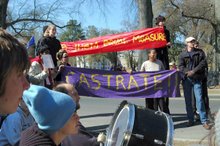




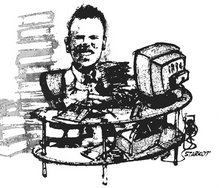
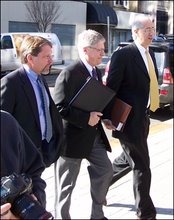
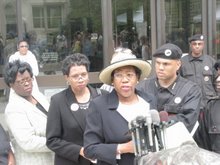
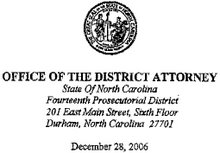
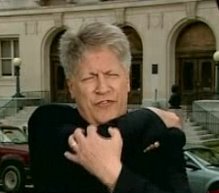



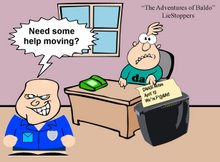

















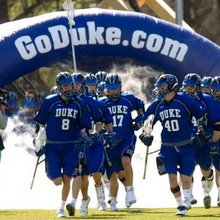

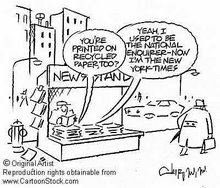


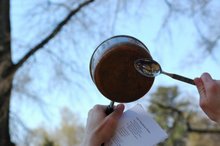

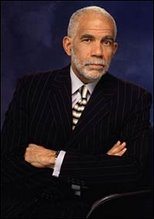
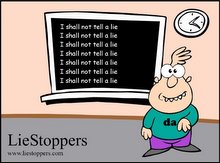






9 comments:
Bravo!
Excellent! Re: Lesson #5. Why don't CGM and Nifong both take polygraph tests?
Excellent! You're right. This article describes this case and Nifong exactly. It is truly disturbing that there are other "Nifongs" out there. He is making all prosecurors look like shady bullies. I don't understand how this can possibly exist in America.
Excellent analysis!! That garbage in the Durham DA office is disgusting. Does anyone know the
telephone number for Durham garbage pick up? We need to get a truck over there right away.
Does this make Nifong anatomically correct?
You hit the nail on the head with this one. Durham and NC elected officials have turned a blind eye. The corruption runs deep. The U.S. Justice Department in conjunction with the FBI should and must investigate Nifong and the DPD. Destroying evidence, lying to the judge about evidence, breaking ethic codes for his office, misleading and lying to the public, inciting racial tensions in his district, profiling Duke students the list goes on. Directly from the FBI website: "Corrupt practices strike at the heart of social order & justice." "The FBI has the ticket on investigations of corruption as top priority". The Public Integrity Section of the FBI states its purpose is "Focusing on major systemic corruption in the body politic" I have sent a large packet of information to the U.S. Department of Justice requesting an investigation into Nifong and DPD. I am also sending a letter to the FBI requesting an investigation. The very least the FA, Kim Roberts, Nifong, Gottleib, and Haim should all have to take lie detector tests. If it is good enough for counter intelligence with the CIA it is good enough for Durham, NC. This case embodies all that the FBI and Justice are fighting.
So, if you support these young men, write to the U.S. Department of Justice:
U.S. Department of Justice
Attorney General Alberto Gonzales
950 Pennsylvania Ave NW
Washington, D.C. 20530-0001
FBI:
Federal Bureau of Investigation
Center for Public Integrity
J. Edgar Hoover Building
935 Pennsylvania Ave NW
Washington, D.C. 20535-0001
A brief letter is all that is needed, requesting an investigation into Nifong and the DPD and their terrorism of these young men and their families.
Each letter makes a difference.
Thank you.
Liz
Allen Breed has now used the study of prosecutorial misconduct in his new article about Nifong:
http://www.boston.com/news/nation/articles/2006/10/07/deep_questions_remain_in_duke_rape_case/
Liz is correct. Every letter is important. Please write one to each of the addresses she listed.
"Dukes Of Hazard?!"
Comment posted by Anonymous on Fri, 02/09/2007 - 12:34am
The dispicable fact of the matter is duping the public, and the worlds attention away from crimes against humanity, and corruption at every level of government!
Durham has become Serpico, only southern and full of good old boys.
Why media has concerned itself more with Duke and false allegations, over reported crimes committed by law enforcement is a national disgrace!
Women have been kidnapped, forced into prostitution (probably still are,) counterfeiting, cocaine trafficking, and murders for hire, all to be dropped and swept under a rug?!
What has become of "And Justice For All?!"
Post a Comment